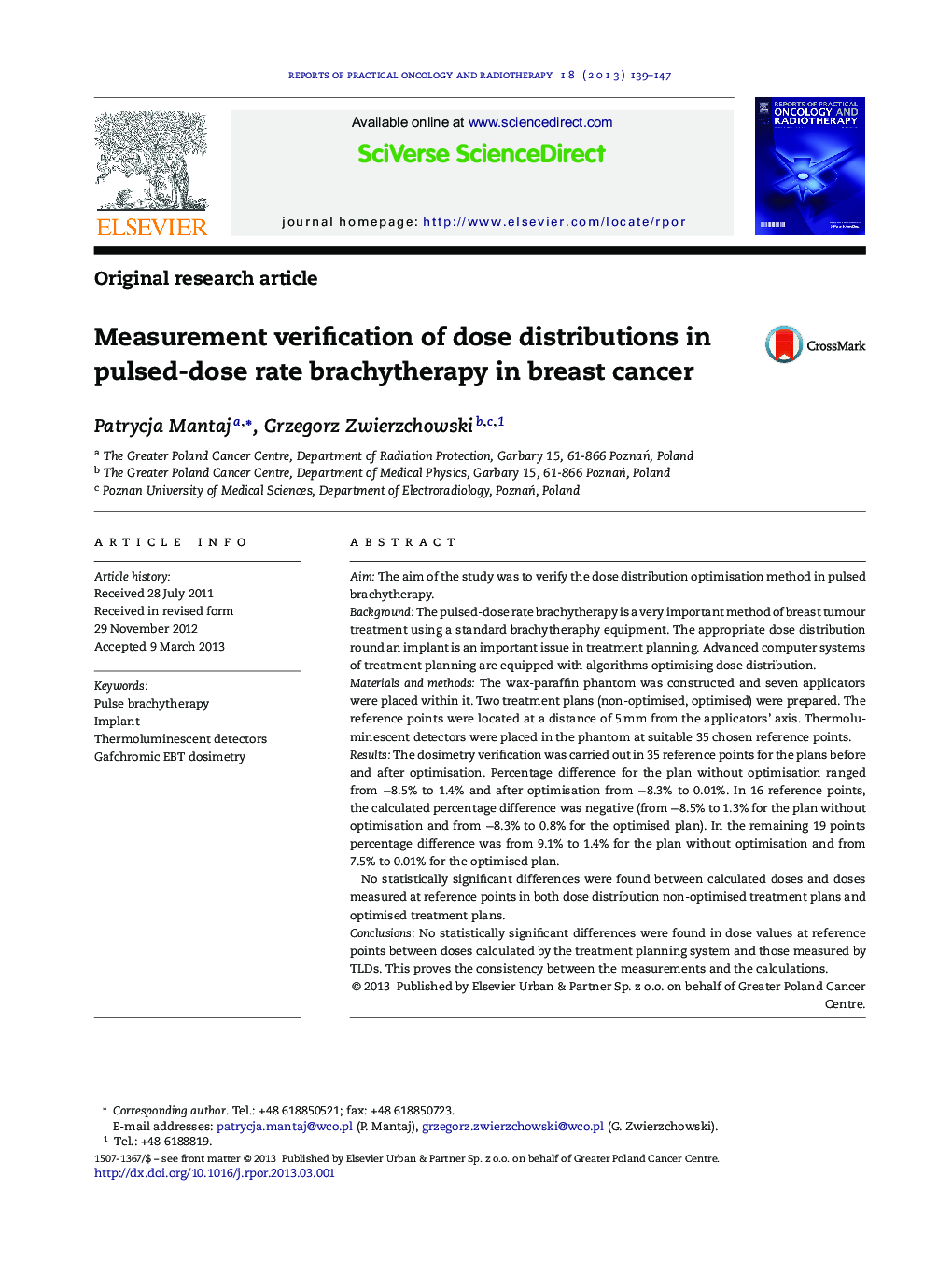| Article ID | Journal | Published Year | Pages | File Type |
|---|---|---|---|---|
| 1855682 | Reports of Practical Oncology & Radiotherapy | 2013 | 9 Pages |
AimThe aim of the study was to verify the dose distribution optimisation method in pulsed brachytherapy.BackgroundThe pulsed-dose rate brachytherapy is a very important method of breast tumour treatment using a standard brachytheraphy equipment. The appropriate dose distribution round an implant is an important issue in treatment planning. Advanced computer systems of treatment planning are equipped with algorithms optimising dose distribution.Materials and methodsThe wax-paraffin phantom was constructed and seven applicators were placed within it. Two treatment plans (non-optimised, optimised) were prepared. The reference points were located at a distance of 5 mm from the applicators’ axis. Thermoluminescent detectors were placed in the phantom at suitable 35 chosen reference points.ResultsThe dosimetry verification was carried out in 35 reference points for the plans before and after optimisation. Percentage difference for the plan without optimisation ranged from −8.5% to 1.4% and after optimisation from −8.3% to 0.01%. In 16 reference points, the calculated percentage difference was negative (from −8.5% to 1.3% for the plan without optimisation and from −8.3% to 0.8% for the optimised plan). In the remaining 19 points percentage difference was from 9.1% to 1.4% for the plan without optimisation and from 7.5% to 0.01% for the optimised plan.No statistically significant differences were found between calculated doses and doses measured at reference points in both dose distribution non-optimised treatment plans and optimised treatment plans.ConclusionsNo statistically significant differences were found in dose values at reference points between doses calculated by the treatment planning system and those measured by TLDs. This proves the consistency between the measurements and the calculations.
